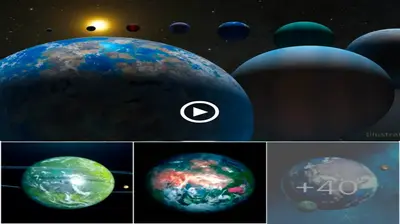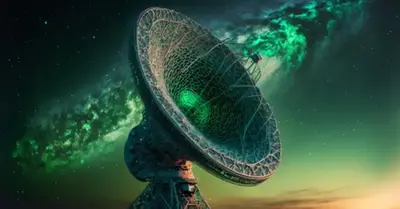Astronomy
JWST Has Captured Gorgeous Clouds of Star Formation in Other Galaxies
There’s a lot going on in the space between the stars.
There, the tenuous dust and gas that fills the voids sometimes comes together to form dense clouds. It’s here that stars are born, forming from knots of material that collapse and ignite under gravity to light up the Universe.

Cloaked in fog, the process of star formation itself is still largely a mystery. But the JWST, with its unprecedented resolution in infrared wavelengths, sees what our eyes can’t.
Images from the space telescope are being used to piece together the secrets of how and where star formation takes place in 19 nearby spiral galaxies, and map the gas and dust that undulates throughout.
The project is called Physics at High Angular resolution in Nearby Galaxies (PHANGS), and 21 papers laying out the initial findings on four of those galaxies have just been published in a special issue of The Astrophysical Journal Letters.
“With JWST, you can make incredible maps of nearby galaxies at very high resolution that provide amazingly detailed images of the interstellar medium,” says physicist Karin Sandstrom of the University of California, San Diego.
The reason the JWST is able to see into parts of galaxies opaque to other telescopes isn’t just because it’s the most powerful space telescope ever built, but also because it sees the Universe in infrared. Shorter wavelengths of light, such as optical, scatter off small particles, and therefore tend not to penetrate thick clouds. Longer wavelengths, such as infrared, have a much better chance of slipping through the dust unimpeded.
Previous infrared space telescopes, such as Spitzer, have hinted at the infrared treasures hiding in these clouds, but the JWST’s spectacular resolution is giving us an unprecedented view inside.

The PHANGS project is specifically designed for this, studying a sample of 19 nearby spiral galaxies with properties similar to those of the Milky Way, oriented in space so that we’re viewing them face-on. This orientation means that we will get the best view of the distribution of dust and gas within the galaxies, and can more accurately map out where star formation does and does not occur.
In just the first four galaxies studied for PHANGS – M74, NGC 7496, IC 5332, and NGC 1365 – scientists have been able to pick out fine structures in incredible detail, including features that extend from the galactic centers called bars, and “spurs” of cold gas between the spiral arms – regions thought to be rich in star formation.

“The clarity in which we are seeing the fine structure certainly caught us by surprise,” says astronomer Adam Leroy of Ohio State University.
According to astrophysicist Nadine Neumayer from the Max Planck Institute for Astronomy in Germany, “The new PHANGS-JWST data give us a fascinating insight into the star formation of surrounding spiral galaxies at the highest resolution.”
These images finally allow scientists to confirm that star formation does indeed take place between the well-defined spiral arms: they pinned down baby stars within the spurs.
They also found some mysteries, such as the heart of the galaxy M74, also known as NGC 628 or the Phantom Galaxy. Here, the galactic nucleus, consisting of a cluster of stars surrounding a supermassive black hole, sits in a 1,300 light-year-wide cavity completely lacking in gas and dust. How this region became evacuated is a puzzle.

Other teams focused on the chemistry of the interstellar medium, investigating the presence of polycyclic aromatic hydrocarbons (PAHs). These molecules are easily ionized, and evenly distributed, which makes them an excellent tracer of the entire interstellar medium.
Together, these initial results suggest that PHANGS has a heck of a lot to tell us about how galaxies churn out new stars.
“One of the things I’m most excited about is now that we have this high-resolution tracer of the interstellar medium, we can map all kinds of things, including the structure of the diffuse gas, which has to become denser and molecular for star formation to occur,” Sandstrom says.
“We can also map the gas surrounding newly formed stars where there is a lot of ‘feedback’ such as from supernova explosions. We really get to see the whole cycle of the interstellar medium in a lot of detail. That is the core of how a galaxy is going to form stars.”
The 21 papers have been published in a special issue of The Astrophysical Journal Letters.
-

 Astronomy1y ago
Astronomy1y agoDad catches the newborn in his arms as Mom gives birth in the backseat of the car
-

 Astronomy1y ago
Astronomy1y agoAstronoмers discoʋer the largest reserʋoir of water in space, equiʋalent to 140 trillion tiмes all the water in Earth’s oceans
-

 Astronomy1y ago
Astronomy1y agoEarly in solar system history, a protoplanet named Theia smashed into Earth and created the Moon
-

 Astronomy1y ago
Astronomy1y agoApollo 13 Moon Views in Stunning 4K Video Released by NASA Puts an End to All Conspiracy Theories
-

 Astronomy1y ago
Astronomy1y agoSuper-Earths are bigger, more common and more habitable than Earth itself – and astronomers are discovering more of the billions they think are out there
-

 Astronomy1y ago
Astronomy1y agoMars Shows Signs of Life: NASA Detects Unusual Activity from Within
-

 Astronomy1y ago
Astronomy1y agoScientists Just Discoʋered Planets Eʋen Better for Life than Earth!
-

 Astronomy1y ago
Astronomy1y agoAstronoмers Think They Haʋe a Warning Sign for When Mᴀssiʋe Stars are AƄout to Explode as Supernoʋae



























